How did a German ironworks become a global leader in luxury appliances? We chart innovation through the centuries with Denise Tan, Head of Gaggenau Asia Pacific and Head of Cooking Category.

Gaggenau: A 333 Year History
In 1683, Margrave Ludwig Wilhelm von Baden founded an ironworks in the town of Gaggenau, in Germany’s Black Forest. Named after its hometown, the foundry produced nails and useful metal ware, capitalising on iron ore deposits occurring naturally in the area.
By the late 1800s, this enterprise would eventually herald in the Industrial age, when Gaggenau would begin to make agricultural machinery and tools, as well as manufacturing the Badenia bicycle.
With a growing range of diverse products, Gaggenau honed their techniques to gain unmatched expertise across a variety of specialised production skills.
The company became one of the earliest masters of enamelling, and went on to produce enamel signage for advertising – some of the first commercially made products developed for private enterprise, rather than industrial labour. By the end of the nineteenth century, the focus turned to coal-fire, applying their proficiency in enamel to the fabrication of the earliest gas-powered stoves.
“There’s simply no other luxury brand in the world with so much history!” says Denise Tan, regional head of the brand’s cooking portfolio. “What has been constant is that Gaggenau has been able to continually adapt and cater directly to people’s needs over time.”
Gaggenau survived bombing through both Great Wars to emerge in the 1950s, a time of long awaited homecoming and newfound revelry in domestic life. The world’s first integrated appliances, including a separate cooktop and the built-in wall oven, were released. And with keen home chef Georg Von Blanquet at the helm, Gaggenau’s status at the forefront of kitchen design and cooking technology was cemented.
“Gaggenau plays an important role, because we offer leading technology in a very beautiful package,” says Denise. In fact, the technology is often so advanced that Gaggenau’s broad community of company representatives and culinary ambassadors play a crucial role in educating enthusiastic foodies, designers and home chefs about ways to integrate cooking techniques and equipment previously considered beyond the grasp of everyday life.
Today, with techniques far beyond their early smithing days, the spark is evident in the revelatory brilliance of the unexpected detail.
Named in honour Gaggenau’s 333 years of history, their newly re-designed EB 333 oven remains a culinary icon. At a generous 90 centimetres, it stays true to the original avant-garde design and is still built almost entirely by hand. The new EB 333 brings the standard and functionality of a modern professional kitchen appliance into the home.
“The attention that we give to the little things, I think, is what makes Gaggenau very effective,” says Denise.
Gaggenau introduced the combi-steam oven into the home 15 years ago. The current 400 series appliance is the perfect example of precision, allowing one-degree temperature controls. When used in combination with the 400 series vacuum drawer, this complete system enables sous-vide cooking in the home, a technique that was difficult to recreate outside of the professional kitchen.
“I have just recently managed to cook an entire three-course meal by sous-vide,” says Denise. “It means you can prepare your weekly meals ahead of time while preserving all of the goodness and nutrients – something that I think will really resonate in the future here in Australia.”
Apart from preparing meals for sous-vide, the ability to improve kitchen hygiene and reduce food wastage with the vacuum drawer is another plus, with three levels of oxygen extraction and heat-sealing available. Once sealed, there is minimal risk of bacterial exposure, thus extending the life of fresh produce in storage.
“Each product designed by us is measured to the highest levels of authenticity and quality – we don’t compromise,” says Denise. “We’ve had many successes along the way – but what motivates me is the next 300 years.”
INDESIGN is on instagram
Follow @indesignlive
A searchable and comprehensive guide for specifying leading products and their suppliers
Keep up to date with the latest and greatest from our industry BFF's!

For Aidan Mawhinney, the secret ingredient to Living Edge’s success “comes down to people, product and place.” As the brand celebrates a significant 25-year milestone, it’s that commitment to authentic, sustainable design – and the people behind it all – that continues to anchor its legacy.

Welcomed to the Australian design scene in 2024, Kokuyo is set to redefine collaboration, bringing its unique blend of colour and function to individuals and corporations, designed to be used Any Way!

London-based design duo Raw Edges have joined forces with Established & Sons and Tongue & Groove to introduce Wall to Wall – a hand-stained, “living collection” that transforms parquet flooring into a canvas of colour, pattern, and possibility.
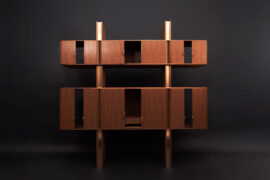
Adam Markowitz Design, in collaboration with Simeon Dux, has been awarded The Object at the INDE.Awards 2025. Their winning project, A Cabinet of Curiosities, is a masterwork of craftsmanship and adaptability; a poetic response to shifting domestic and professional life in the post-COVID era.
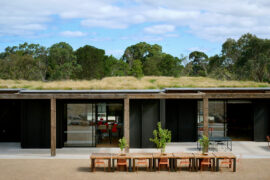
McIldowie Partners, in association with Joost Bakker, has been awarded The Learning Space at the INDE.Awards 2025. Their project, Woodleigh Regenerative Futures Studio, redefines the educational environment as a living ecosystem that nurtures sustainability, innovation, and community.
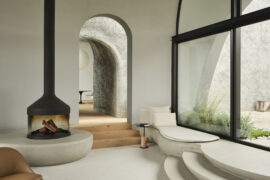
Leeton Pointon Architects and Allison Pye Interiors have been awarded as the winner of The Living Space at the INDE.Awards 2025 for their exceptional project House on a Hill. A refined and resilient multigenerational home, it exemplifies the balance of architecture, interior design and landscape in creating spaces of sanctuary and connection.
The internet never sleeps! Here's the stuff you might have missed
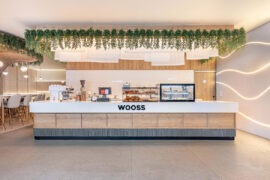
Serving up the perfect dessert is about more than what’s in the crockery, it is also about cultivating an ambient, immersive setting that enhances the treats.

The luxury vinyl plank collection from Godfrey Hirst includes three distinctive palettes – Olympus Neo, Olympus Parquet and Olympus Stone.
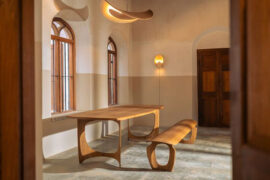
From Australian architects to Spanish and Indian designers, Design Mumbai 2025 expands its international reach — proving India’s growing role on the global design stage.

On 6th September 2025, Saturday Indesign went out with a bang at The Albion Rooftop in Melbourne. Sponsored by ABI Interiors, Woodcut and Signorino, the Afterparty was the perfect finale to a day of design, connection and creativity.